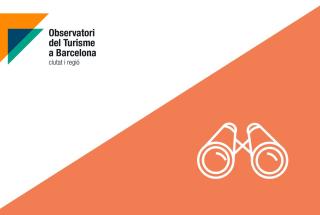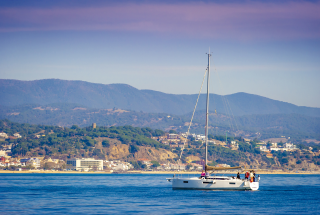The first results of the Sustainable Tourism Indicators System (SITS - OTB) have been published
17/11/2022 - 09:45h
The effects of Covid-19 on tourism activity have had a significant influence on the results

The Barcelona Tourism Observatory: city and region has published the first results of the list of 30 indicators that measure the sustainability degree of Destination Barcelona, taking into account the three areas of tourism sustainability: the environmental, the economic and the socio-cultural. By monitoring these indicators, the OTB reaffirms its mission to contribute to the sustainability of tourism activity, with the aim of facilitating decision-making of tourism stakeholders.
The results of the indicators, which can be consulted in the Sustainability section of the OTB website, are presented through a PowerBI visualisation that includes additional information on each of them: the area and the issue they belong to, the SDGs and other indicators they are related to, their calculation method, their interpretation, the reasons of their choice, and the used sources. The analysis of these results includes an interactive comparison of the OTB's three usual geographical areas of analysis (Barcelona city, Barcelona region and Destination Barcelona).
As for the analysed period, data since 2018 has been included, as long as it is available, depending on the updating status of the different sources. These sources are public or from public bodies. The objective is to update the data as soon as new information is available.
Regarding the interpretation of the results, it should be noted that the impact of Covid-19 on tourism activity in Destination Barcelona has had a noticeable influence.
Thus, the reduction in tourist activity and the change in tourist profile during the pandemic has led to an improvement in some of the environmental indicators. For example, I01: Average distance travelled by tourists from origin to destination decreased due to the loss of international tourists. I09: Percentage of tourists arriving by sustainable collective vehicles increased, has been also reduced, thanks to the reduction of air travel as the main arrival transport. However, other indicators, such as I11: Percentage of tourists moving by public transport at the destination, worsened.
On the other hand, several economic indicators, such as I15: Tourist average expenses during the stay or I18: Average salary of tourism activity and average salary of the rest of the activities ratio, were negatively affected with sharp falls in both cases. Seasonality (I14: Maximum and minimum monthly overnight stays in accommodation ratio) was also strongly affected, with a significant increase, mainly in 2020.
In terms of socio-cultural indicators, while tourism pressure decreased (I21: Percentage of tourists to residents), other indicators followed a negative trend (I25: Percentage of residents that consider that tourism is rather beneficial for the destination). Wage inequalities between men and women were also accentuated (I23: Average salary of women and men in the tourism activities ratio).
In short, the first results of the SITS-OTB have been hidden by the effects of Covid-19 in Destination Barcelona, but the analysis of the future evolution of the indicators included will make it possible to determine if the pandemic initiated a change in the model of tourism activity, not only from the point of view of tourism offer and demand but also of the job market, governance and promotion of destinations.
More information: SITS-OTB results
Share:


